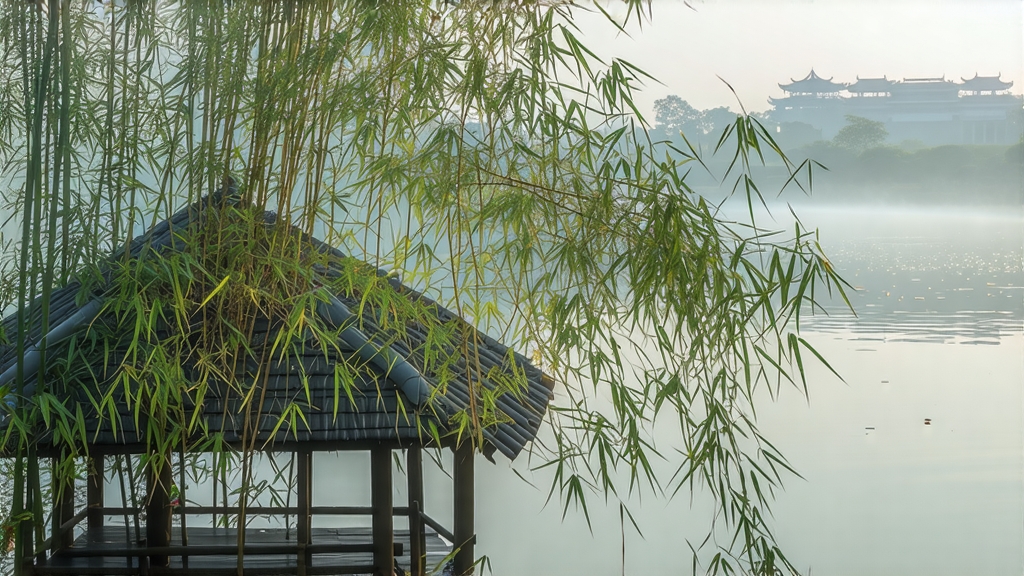
Longjing, literally “Dragon-Well,” is the most celebrated among China’s more than one thousand green-tea styles. Its fame rests not on legend alone but on a convergence of micro-climate, quartz-rich soil, and a 1,500-year dialogue between monks, emperors, and gardeners. International drinkers often meet it first through a glass teapot where the leaves stand upright like tiny green flags, a silent choreography that has become the visual shorthand for Chinese green tea itself.
Historical whispers place the tea’s birth near the Lingyin Temple outside Hangzhou during the Eastern Jin dynasty (317-420 CE). A Ming-era travel diary first couples the name “Longjing” with a specific well south of West Lake, describing water so dense that, after rain, swirling lines resembled a dragon’s spine. Qing Emperor Qianlong, touring the region in 1751, allegedly pocketed several bushes on Shifeng Peak and declared them imperial property; the eighteen plants still survive, fenced yet unguarded, their spring flush auctioned for more than the price of gold per gram.
Today the legal geographical indication covers only 168 square kilometers straddling West Lake. Within this micro-zone four peaks command premium: Shifeng (Lion Peak), Meijiawu, Wengjiashan, and Longjing Village itself. Each slope faces a slightly different azimuth, altering the ratio of morning fog to afternoon sun and, consequently, the balance between grassy sweetness and chestnut bite. Beyond the lake, the same cultivar produces “Zhejiang Longjing,” pleasant yet lacking the lake’s mineral snap; connoisseurs liken the difference to Chablis versus generic Burgundy.
The cultivar story is equally nuanced. While the region plants several Camellia sinensis var. sinensis biotypes, only three are accepted for authentic West Lake Longjing: the traditional Longjing #43, the heirloom Qunti (population) bush, and the newer Zhongcha 108. #43, a 1970s clonal selection, germinates seven to ten days earlier, yielding a pale, intensely aromatic liquor. Qunti leaf is tougher, picked later, and delivers the broad, “orchid-chestnut” profile that older drinkers remember. Zhongcha 108, bred for frost resistance, is gaining ground on higher, north-facing slopes.
Harvest calendar is ruthless: only forty days between Qingming and Grain Rain festivals guarantee the highest grade. Pickers, mostly women who have commuted from neighboring Anhui for two generations, pluck the standard “one bud with one unfolding leaf,” never longer than 2.5 cm. A skilled hand can collect 1.2 kg of fresh leaf per day; that shrinks to 300 g after firing, enough for perhaps sixty cups. Rain-day leaf is rejected because water clinging to the surface will “stew” rather than sear in the wok, flattening aroma.
Pan-firing, or “killing-green,” is Longjing’s signature craft. In a corner of Meijiawu village, woks heated to 180 °C glow like small suns. The master—always addressed as shifu— tosses the leaves with bare hands, relying on callus thickness built over decades. Ten minutes of high heat deactivates enzymes, followed by a cooler “shaping” phase where pressure against the wok wall straightens each leaf into the famous sword shape. A final “hui guo” or return-to-wok at 80 °C sets the moisture at 5 %, low enough for year-long storage yet high enough to preserve the jade color. UNESCO listed the technique as Intangible Cultural Heritage in 2011, but only fifty full-time roasters remain, their average age nudging sixty.
To brew, western drinkers need only remember three numbers: 3 g, 80 °C, 200 ml. A tall, clear glass is preferred both for aesthetics and for heat dissipation. After pre-warming, half-fill the glass, drop the leaves, then top up. In thirty seconds the first buds begin to sink, trailing silver bubbles that Chinese poets call “snowflakes.” The liquor should be the color of early morning willow buds, never chartreuse. First infusion lasts forty-five seconds; subsequent steeps extend by fifteen. By the fourth pour the leaves have given their all; spread them on a plate and admire the intact tip and serrated edge—proof of hand-picking.
Tasting notes follow a temporal arc. The front